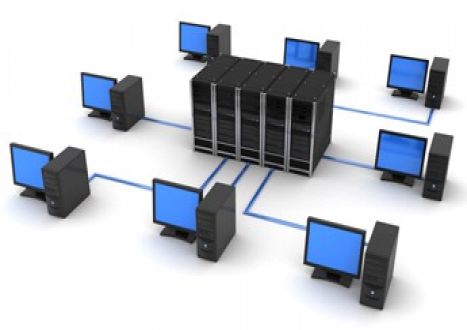- Home
- Video Courses
- Certifications
- 300-435: Automating Cisco Enterprise Solutions (ENAUTO) Dumps


300-435: Automating Cisco Enterprise Solutions (ENAUTO) Certification Video Training Course
300-435: Automating Cisco Enterprise Solutions (ENAUTO) Certification Video Training Course includes 64 Lectures which proven in-depth knowledge on all key concepts of the exam. Pass your exam easily and learn everything you need with our 300-435: Automating Cisco Enterprise Solutions (ENAUTO) Certification Training Video Course.
Curriculum for Cisco ENAUTO 300-435 Certification Video Training Course




300-435: Automating Cisco Enterprise Solutions (ENAUTO) Certification Video Training Course Info:
The Complete Course from ExamCollection industry leading experts to help you prepare and provides the full 360 solution for self prep including 300-435: Automating Cisco Enterprise Solutions (ENAUTO) Certification Video Training Course, Practice Test Questions and Answers, Study Guide & Exam Dumps.
Cisco 300-435 ENAUTO Exam – Automation & Programming Practice Tests
Course Overview
The Cisco 300-435 ENAUTO exam, or Automating and Programming Cisco Enterprise Solutions, is a professional-level certification designed to measure the ability to implement automation for enterprise networking. This training program is built to take learners from basic concepts of network programmability to advanced, hands-on implementations using Cisco platforms and APIs. The aim is not just to help students pass the exam but to transform them into confident network automation specialists who can apply automation to solve real business problems.
This course provides a structured journey through the technologies, tools, and programming principles necessary for success in today’s networking world. It starts with a detailed explanation of why network automation matters, exploring industry trends and the growing complexity of enterprise networks. Learners will see how automation reduces operational risk, speeds up deployment times, and creates more consistent, reliable configurations.
The training is immersive, combining conceptual teaching with practical labs. Students will practice coding in Python, making API calls, and working with Cisco DNA Center, Meraki Dashboard, and SD-WAN vManage platforms. The hands-on approach is central to this program, giving learners a realistic environment to practice and refine their skills until they can execute automation tasks with confidence.
Learning Objectives
The course is designed to ensure that every learner gains deep competence across all exam domains. By the end, students will have mastered the ability to interact with Cisco enterprise devices programmatically, use REST APIs effectively, parse and process data in JSON format, and create automation scripts that are scalable and reusable. They will also understand model-driven programmability and the role of YANG, NETCONF, and RESTCONF in network configuration management.
Another major objective is to develop problem-solving and troubleshooting skills. Students are guided through debugging processes, error handling in Python scripts, and best practices for working with APIs in production environments. These skills are crucial not only for passing the exam but for becoming a trusted automation professional in any organization.
The Importance of Automation in Modern Networking
Enterprise networking has undergone a major transformation over the last decade. With the rise of cloud adoption, hybrid work, and software-defined networking, the traditional approach of configuring devices one by one through CLI no longer scales. Automation is the only way to manage networks efficiently at scale. This course teaches learners to think beyond device-by-device configuration and adopt a mindset of treating the network as code.
Learners will see how automation ties into broader IT initiatives such as DevOps, NetDevOps, and intent-based networking. They will learn about the evolution of network management, from manual commands to policy-driven control planes, and how Cisco tools enable that transition. Understanding this context helps learners appreciate not just the “how” but the “why” behind the technologies they are studying.
Tools and Technologies Covered
A major strength of this training program is its coverage of the full Cisco enterprise automation ecosystem. Students will gain hands-on experience with Cisco DNA Center APIs for configuration and assurance, Cisco SD-WAN vManage APIs for WAN edge automation, and Cisco Meraki APIs for managing distributed networks. They will also practice with model-driven interfaces like NETCONF and RESTCONF and learn to consume YANG data models to make structured changes to network devices.
The course emphasizes Python as the primary scripting language and provides numerous examples, exercises, and code snippets to help learners become comfortable with automating tasks programmatically. Postman and other API testing tools are also introduced to allow students to explore endpoints and experiment before automating tasks in code.
Course Flow and Learning Approach
The program is organized so that each module builds on the previous one, gradually deepening the learner’s understanding. Early modules focus on core concepts and foundational knowledge. Later modules add complexity by integrating multiple technologies and requiring the learner to solve realistic problems. This approach ensures that learners not only memorize material but also build muscle memory through repetition and guided practice.
Quizzes and scenario-based questions are interspersed throughout the course to reinforce learning. These scenarios simulate common enterprise challenges, such as retrieving inventory from hundreds of devices, pushing a configuration change safely, or verifying network compliance after a deployment. By practicing these scenarios, students learn to think like automation engineers and prepare themselves for both the exam and their professional responsibilities.
Modules
Introduction to Network Programmability
The course begins with a full exploration of what network programmability means and how it is implemented in Cisco enterprise networks. Learners are introduced to the shift from manual, CLI-based configuration to automated, software-defined control. The module discusses how programmability can be applied to day-zero provisioning, day-one deployment, and day-two operations, covering the full lifecycle of network management.
Python Foundations for Network Engineers
Because many students come from a networking background rather than a development one, the next module provides a thorough introduction to Python. Students are taught how to write Python scripts, use variables, control program flow with loops and conditionals, and define functions for reusability. All examples are networking-related to make learning contextual and relevant.
Working with REST APIs and JSON
In this module, students learn how to make API requests to network devices and controllers. They practice sending GET, POST, PUT, and DELETE requests, authenticating with tokens, and handling different response codes. JSON parsing is introduced so learners can extract useful information from responses and use it in scripts.
Cisco DNA Center Programmability
Students are guided through interacting with Cisco DNA Center programmatically. This includes retrieving device inventory, applying templates, initiating software upgrades, and collecting telemetry. The labs give learners experience with real-world tasks such as automating device onboarding and validating network health.
Cisco SD-WAN and vManage Automation
This module explores how to use the vManage API to retrieve network topology, configure policies, and monitor WAN performance. Learners will practice authenticating to vManage, working with session tokens, and managing large-scale changes across multiple WAN edges safely and efficiently.
Meraki Dashboard API
In this section, students are introduced to Cisco Meraki and its cloud-managed architecture. They practice retrieving organization and network information, managing SSIDs, and updating network configurations programmatically. This is especially valuable for engineers working in multi-site enterprise networks.
Model-Driven Programmability with YANG
This module focuses on the power of structured data modeling. Students learn how to retrieve and edit configuration data using NETCONF and RESTCONF, understanding how YANG models standardize data representation and make automation more reliable.
Final Capstone Project
To conclude the course, students undertake a capstone project that integrates everything they have learned. They are tasked with designing and implementing a full network automation workflow that spans multiple Cisco platforms. This project gives them the opportunity to demonstrate mastery and gain confidence ahead of the exam.
Course Requirements
A comprehensive training program for the Cisco 300-435 ENAUTO exam must clearly define what learners need before they begin. Understanding these requirements helps participants come prepared, ensures they can keep pace with the course content, and allows them to gain the most value from each session. The requirements for this course are not designed to be restrictive but to create a strong foundation so that every learner can succeed. This section explains the technical knowledge, practical experience, and mindset that students should have before enrolling.
Foundational Networking Knowledge
One of the most important prerequisites for this course is a solid grasp of fundamental networking concepts. Students should already be comfortable with TCP/IP protocols, IP addressing and subnetting, VLANs, routing protocols like OSPF and EIGRP, and basic switching operations. This knowledge ensures that when programmability and automation concepts are introduced, students can focus on the new material rather than struggling with core networking theory.
Familiarity with enterprise networking architectures is helpful as well. Students should understand how campus networks, WANs, and data center networks are typically designed. This includes awareness of devices such as routers, switches, wireless controllers, and firewalls and how they work together to provide end-to-end connectivity. The course assumes that learners can read network diagrams, follow traffic flows, and reason through routing and switching behavior.
Experience with Cisco Enterprise Devices
Because the course content is built around Cisco enterprise platforms, prior exposure to Cisco IOS XE devices is highly recommended. Learners who have already configured routers and switches from the CLI will find it easier to map their knowledge to automated workflows. Familiarity with commands for viewing interface status, configuring routing protocols, and applying access control lists will provide valuable context when the course moves into programmatic configuration.
Hands-on experience with Cisco DNA Center, Cisco Meraki Dashboard, or Cisco SD-WAN vManage is helpful but not required. The course includes guided demonstrations and labs that introduce these platforms, but learners who have logged in and explored their interfaces beforehand will be able to move faster through the material.
Basic Programming Familiarity
While the course provides an introduction to Python, students should ideally have some exposure to programming concepts before starting. Understanding what variables, loops, and functions are will make the Python module easier to absorb. Even very basic scripting knowledge from another language such as Bash, JavaScript, or PowerShell can provide a helpful frame of reference.
The course emphasizes that learners do not need to be software developers to succeed. Network automation requires practical, task-focused scripts rather than large software applications. Nevertheless, a willingness to learn to read and write code is essential. The ability to troubleshoot syntax errors and understand program logic is critical to progress through the labs.
Familiarity with APIs and Data Formats
Students will spend a significant portion of this course working with REST APIs and data formats such as JSON and XML. A basic understanding of what an API is and how applications exchange data over HTTP will help learners start on strong footing. The course explains these concepts from the ground up, but having some prior experience using a tool like Postman or even interacting with a simple web API will make the learning curve gentler.
Knowledge of JSON structure, such as key-value pairs, nested objects, and arrays, is beneficial. The ability to read and interpret JSON responses is critical when retrieving data from Cisco platforms programmatically. Learners will also work with YANG models, so understanding the concept of data modeling in networking is helpful.
Computing Environment and Tools
Because this course is highly hands-on, students need access to a computer with a modern operating system capable of running Python scripts and API testing tools. A reliable internet connection is required to interact with cloud-based services such as Cisco DevNet sandboxes. Learners should be able to install software, configure environment variables, and troubleshoot basic connectivity issues on their machines.
The recommended setup includes Python 3.x installed locally, an IDE or text editor such as Visual Studio Code, and API testing tools like Postman. Students should also have the ability to install additional Python packages using pip when needed. Being comfortable navigating the command line is advantageous since many labs involve running scripts from a terminal.
Time Commitment and Study Discipline
The ENAUTO exam covers a wide range of material, and mastering it requires a significant investment of time. Students should be prepared to dedicate consistent hours each week to lectures, labs, and practice tests. The course is designed to be flexible, but learners who treat it with discipline and follow the recommended schedule will achieve better results.
Studying network automation is not only about watching videos or reading material but about writing code, testing it, and debugging errors. Patience and persistence are essential qualities. Students should be ready to experiment, make mistakes, and learn from those mistakes as part of the process.
Access to Lab Resources
Hands-on practice is one of the pillars of this course. Learners must ensure they have access to lab resources such as Cisco DevNet sandboxes, virtual machines, or physical devices. The course provides detailed guidance on setting up a practice environment, but students must take responsibility for booking sandbox sessions and managing their time so they can complete exercises.
Students working in enterprise environments may also have the opportunity to test automation scripts in lab segments of their company’s network. This is highly encouraged as it gives real-world context to the material. Regardless of whether learners use Cisco’s hosted labs or their own equipment, they should be prepared to spend time configuring and validating automation workflows.
Recommended Certifications and Background
While not strictly required, holding a Cisco Certified Network Associate (CCNA) or having equivalent knowledge is highly recommended. The CCNA ensures that learners already have a strong understanding of fundamental networking topics, which are assumed knowledge in ENAUTO. Those who have completed the CCNP Enterprise Core exam (ENCOR) may also find themselves more comfortable with some of the enterprise architecture topics covered in this training.
Experience working in a network operations center, help desk, or field engineering role is also beneficial. Practical exposure to troubleshooting network outages, deploying devices, and maintaining enterprise infrastructure gives learners a deeper appreciation of why automation is valuable and how it can solve common operational challenges.
Mindset and Willingness to Learn
Perhaps the most important requirement is a growth mindset. Network automation can be intimidating for learners who have never written code before, but the course is designed to be approachable and supportive. Students who embrace curiosity, remain patient with themselves, and persist through challenges will be rewarded with a valuable new skill set.
This course encourages creative problem solving and experimentation. There is often more than one way to achieve an automation goal, and students will be challenged to think critically about the most efficient and reliable approach. Developing this mindset is not just useful for passing the exam but is also essential for becoming a strong network automation professional.
Course Description
This training course is a complete, end-to-end learning journey designed to prepare students for the Cisco 300-435 ENAUTO exam and to transform them into confident practitioners of network automation. The course is built to take learners from the very foundations of programmability and gradually guide them through increasingly complex concepts until they can automate real-world enterprise networks using Cisco platforms and APIs. It is more than just a set of lectures — it is an immersive experience combining theory, hands-on practice, and scenario-based challenges that mimic the situations network engineers face every day.
The course begins by introducing learners to the philosophy of network automation. It explains why enterprises are moving toward intent-based networking and software-defined solutions, and how automation enables faster, more reliable network operations. Students will explore how APIs have become the primary interface for interacting with network devices and controllers, replacing repetitive manual configurations with programmable workflows. By the time students complete this section, they will understand not just the mechanics but also the business value of automation.
From there, the course transitions to Python programming and basic software development principles for network engineers. Unlike generic programming courses, every example here is tied directly to networking use cases, such as collecting interface data, pushing configurations, and analyzing telemetry. This ensures that learners see immediate relevance in what they are coding, which keeps engagement high and accelerates learning.
As the course progresses, students dive into Cisco DNA Center, Cisco SD-WAN vManage, and Meraki Dashboard automation. These modules are packed with real API calls and live demonstrations that show students how to authenticate to platforms, send requests, parse responses, and chain actions together into scripts. This section also covers best practices for security, error handling, and scalability, giving students the confidence to use automation in production environments safely.
The later sections of the course focus on model-driven programmability. Students will learn about YANG data models, how they describe network configuration and state information, and how NETCONF and RESTCONF protocols use these models to provide structured interfaces for automation. They will practice retrieving and editing configurations programmatically, gaining skills that are essential for working with modern Cisco devices.
Throughout the course, students are encouraged to think like automation engineers rather than just passive learners. Every topic is paired with labs that require them to write code, troubleshoot issues, and validate results. The capstone project at the end is designed to bring everything together, challenging students to design and implement a multi-platform automation workflow that solves a realistic enterprise problem. This project serves as excellent preparation not only for the ENAUTO exam but also for practical work in the field.
By the end of this course, students will have built a personal portfolio of Python scripts, API workflows, and automation solutions that they can showcase to employers. They will also have the confidence to take on new challenges in their organizations, automate repetitive tasks, and contribute to network transformation initiatives.
Learning Experience
The experience of taking this course is designed to be highly interactive. Students are not just watching lectures but actively engaging with code examples, labs, and challenge problems. Each concept is explained clearly, demonstrated in action, and then reinforced through practice exercises. This approach ensures that learners truly internalize the material rather than simply memorizing it for the exam.
Because network automation is a rapidly evolving field, the course includes references to Cisco DevNet resources and encourages learners to continue exploring new APIs and tools beyond the classroom. The goal is to develop independent learners who can adapt to future changes in technology and stay ahead of industry trends.
Career Relevance
This course is not only valuable for exam preparation but also for career development. Employers are increasingly seeking professionals who can automate networks, reduce operational costs, and improve agility. Completing this training positions students as forward-thinking engineers who understand both the technical and business aspects of automation. This can open doors to roles such as network automation engineer, systems integration specialist, DevNet professional, and enterprise network architect.
Furthermore, earning the Cisco Certified DevNet Specialist – Enterprise Automation and Programmability certification demonstrates to employers that a candidate possesses validated, industry-recognized skills. When combined with other Cisco certifications such as CCNP Enterprise, it creates a powerful combination that signals readiness to lead automation initiatives.
Practical Emphasis
One of the hallmarks of this course is its focus on practical, hands-on experience. Rather than simply teaching theory, it immerses students in real-world scenarios where they must retrieve device inventory, apply configuration templates, and verify network health programmatically. This experience builds confidence and reduces the gap between academic learning and job performance.
The practice labs mirror enterprise conditions as closely as possible. Students will encounter realistic data sets, error messages, and edge cases that force them to think critically. This prepares them to deal with unexpected situations in production environments where automation must be both reliable and safe.
Industry Trends and Context
Automation does not exist in isolation, and this course ensures that students understand the larger trends shaping the networking industry. It explores the movement toward intent-based networking, infrastructure as code, and the integration of networking with DevOps pipelines. Learners gain insight into how Cisco tools support these trends and how their new skills can be applied in hybrid cloud, SD-WAN, and multi-domain environments.
By providing this broader context, the course ensures that students are not just technicians but strategic contributors who can help their organizations achieve digital transformation goals.
Who This Course Is For
This course is designed for a wide range of professionals who want to develop their skills in network automation. It is ideal for network engineers who have traditionally relied on CLI for configuration but who now want to move toward a more scalable and programmable approach. These learners will benefit from seeing how automation can make their work more efficient and less error-prone.
The course is also valuable for systems engineers and solutions architects who need to design and deploy large-scale enterprise networks. Understanding automation enables them to build solutions that are easier to manage and maintain over time.
Software developers who are interested in networking will find this course useful as well. It provides them with the networking context they may lack while allowing them to leverage their existing coding skills to create powerful automation solutions.
IT managers and technical leads may also enroll in this course to gain a deeper understanding of what network automation entails. This knowledge can help them make better decisions about tooling, team skill development, and network strategy.
Students who are working toward the Cisco Certified DevNet Professional certification will find that this course is a critical step in their journey, as it fulfills the concentration exam requirement for the enterprise automation track.
Inclusivity and Accessibility
The course is designed to be accessible to learners from diverse backgrounds. Even if students have minimal programming experience, the gradual introduction to Python ensures they can follow along without feeling overwhelmed. The pacing is carefully calibrated to introduce new concepts progressively, reinforcing them through repetition and practice.
Learners are encouraged to collaborate in discussion forums, share code snippets, and ask questions. This community-driven approach helps everyone stay motivated and fosters a supportive learning environment.
Expected Outcomes
Upon completing this training, students will have a deep, practical understanding of how to automate Cisco enterprise networks. They will be comfortable using APIs, writing Python scripts, parsing JSON, and working with model-driven programmability. They will also have a clear roadmap for continuing their learning journey and staying current with new Cisco technologies.
Student Feedback
Similar Cisco Video Courses
























































Only Registered Members Can Download VCE Files or View Training Courses
Please fill out your email address below in order to Download VCE files or view Training Courses. Registration is Free and Easy - you simply need to provide an email address.
- Trusted By 1.2M IT Certification Candidates Every Month
- VCE Files Simulate Real Exam Environment
- Instant Download After Registration.
Log into your ExamCollection Account
Please Log In to download VCE file or view Training Course
Only registered Examcollection.com members can download vce files or view training courses.




